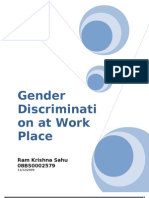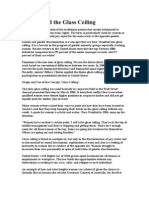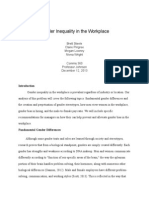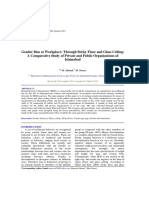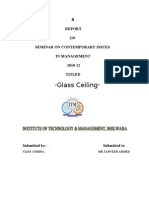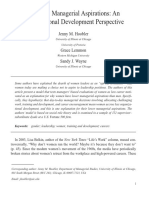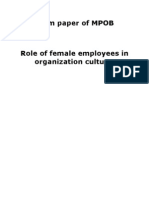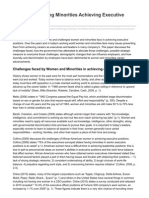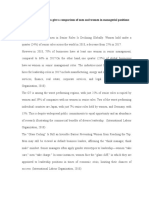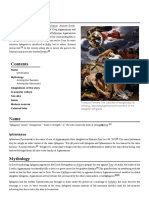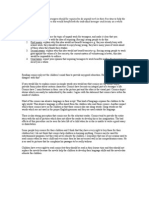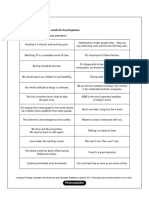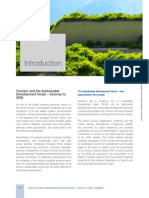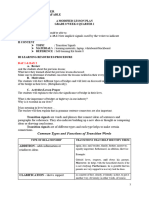0% found this document useful (0 votes)
1K views10 pagesGlass and Concrete Ceilings
Glass and concrete ceilings refer to invisible barriers that prevent women and minorities from advancing to higher levels in organizations. Glass ceilings affect promotion, pay, and leadership roles, while concrete ceilings are even more solid barriers due to discrimination like racism and sexual harassment. These barriers are constructed through male-centric stereotypes of leadership qualities, exclusion of women from certain roles, lower pay and opportunities for advancement compared to men, and direct or indirect discrimination against minorities. Organizational cultures that perpetuate gender roles and lack flexibility for women's needs also contribute to maintaining glass and concrete ceilings.
Uploaded by
Freeman-Jega Rume OrubuCopyright
© Attribution Non-Commercial (BY-NC)
We take content rights seriously. If you suspect this is your content, claim it here.
Available Formats
Download as DOCX, PDF, TXT or read online on Scribd
0% found this document useful (0 votes)
1K views10 pagesGlass and Concrete Ceilings
Glass and concrete ceilings refer to invisible barriers that prevent women and minorities from advancing to higher levels in organizations. Glass ceilings affect promotion, pay, and leadership roles, while concrete ceilings are even more solid barriers due to discrimination like racism and sexual harassment. These barriers are constructed through male-centric stereotypes of leadership qualities, exclusion of women from certain roles, lower pay and opportunities for advancement compared to men, and direct or indirect discrimination against minorities. Organizational cultures that perpetuate gender roles and lack flexibility for women's needs also contribute to maintaining glass and concrete ceilings.
Uploaded by
Freeman-Jega Rume OrubuCopyright
© Attribution Non-Commercial (BY-NC)
We take content rights seriously. If you suspect this is your content, claim it here.
Available Formats
Download as DOCX, PDF, TXT or read online on Scribd
/ 10



